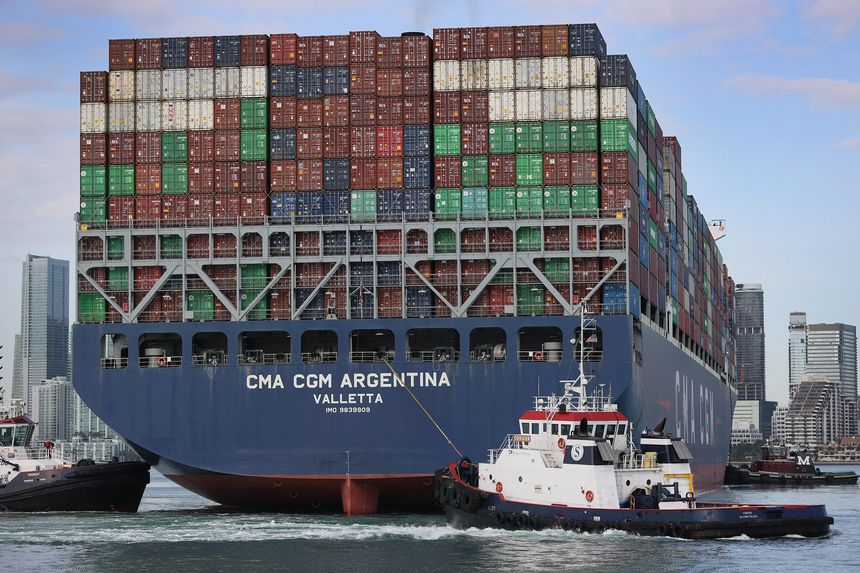
image via WSJ.com
Mark Boone grudgingly accepted that the cost of shipping a container of wax melters from Pakistan to Charleston, S.C., doubled in the past year to more than $17,000.
But the shipping line’s extra $6,820 fee in December for a single container that U.S. Customs and Border Protection pulled aside for inspection for 20 days fell outside commercial market forces, as far as he was concerned
“When you get hit by something you didn’t have anything to do with at all, it’s painful,” said Mr. Boone, managing director of Markus Group Ltd., a contract manufacturer in Raleigh, N.C.
Ocean carriers have been imposing more and larger such fees for boxes that have been sitting for longer periods, sometimes weeks at a time, in logjams that have snarled supply chains during the Covid-19 pandemic. U.S. lawmakers and regulators are taking a hard look at the charges and other shipping practices that critics say have sharply raised costs for American importers and hamstrung the ability of exporters to reach overseas markets.
New measures in Congress and actions by the U.S. maritime regulator, the Federal Maritime Commission, target a container shipping sector dominated by foreign-based carriers that made profits last year estimated by London-based Drewry Shipping Consultants Ltd. at about $150 billion.
Sens. Amy Klobuchar, a Democrat, and John Thune, a Republican, introduced legislation Thursday to change the 24-year-old Ocean Shipping Reform Act. The measure would draw new restrictions around how carriers may coordinate operations in alliances and would prohibit shipping lines from “unreasonably” declining exports. It would also limit the ability of carriers to impose added fees on container handling.
Shippers from furniture and clothing importers to soybean and dairy exporters welcomed the new legislation, which the American Apparel & Footwear Association said would “end these predatory practices.”
The World Shipping Council, a Washington-based trade group representing container shipping lines, said some of the proposed changes could be broadly helpful, but won’t unclog supply chains. It called a similar bill that sailed through the U.S. House in December “deeply flawed” because of provisions that it said gave regulators too much oversight of contracts and operations.
The FMC recently launched enforcement actions against several carriers that could result in firms being fined and forced to repay fees.The moves follow a year in which importers suffered severe shipping delays and skyrocketing shipping costs while exporters say carriers have turned down shipments in a rush to get empty boxes back to Asia for eastbound trade that draws far higher rates.
Average prices to ship a container from Asia to the U.S. West Coast increased by about 500% last September from a year earlier, rising to more than $20,000, according to the Freightos Baltic Index. Some shippers paid more than that to expedite deliveries. Once boxes arrived, shippers say they were charged additional fees if containers weren’t picked up from or returned to ports quickly enough.
Freight forwarders, who book space on vessels on behalf of shippers, say carriers won’t release containers until such fees are paid, leaving forwarders no choice but to pay up and dispute the charges later.
“It’s almost like legalized extortion,” said Jim Burke, president of IGL Logistics Inc., a Charlotte, N.C.-based forwarder.
In a recent audit of carriers, the FMC estimated that from July to September last year, eight of the largest ocean carriers charged fees totaling $2.22 billion. The sum was a 50% increase on the previous three months, though it is unclear how many of the charges were questionable.
“The problem is we don’t know,” said FMC Chairman Daniel Maffei.
Shippers say the fees are unfair when delays are out of their control—a common occurrence during the pandemic. Port truckers say they often can’t pick up containers because they are buried in piles at port terminals or because of a shortage of trailers needed to pull boxes. They can’t return empty containers because terminals are so full they don’t accept boxes for days.
“It’s the kindergarten defense of, ‘It’s not my fault’,” said John Butler, president and chief executive of the World Shipping Council. The fees are needed, he said, to ensure that shippers return boxes as quickly as possible instead of using them as mobile warehouses for their goods.
Some shipping officials, including members of the FMC, say the financial push from fees is a good way to speed the flow of boxes. Rebecca Dye, an FMC commissioner, said charges shouldn’t apply in cases where shippers are delayed because of factors outside their control
The commission says carriers are making it easier to dispute the charges and that in the third quarter of 2021 there was a 48% increase in fees being waived. It has also brought enforcement actions against Hapag-Lloyd AG and Wan Hai Lines Ltd. for levying charges on shippers for days on which containers couldn’t be returned because terminals weren’t accepting them. Representatives for the two carriers declined to comment.
Still, many cargo owners say they have little success challenging the fees at port terminals, and that railroads and other logistics companies add their own fees, too, driving up the cost of shipping to an unreasonable degree. Flexsteel Industries Inc., a Dubuque, Iowa, furniture importer, said additional fees wiped out its profits in the most recent quarter.
Derek Schmidt, the firm’s chief financial officer, said ancillary shipping charges rose to $15 million in the most recent quarter, up from $5 million in the previous quarter and about $100,000 before the pandemic. The firm disputed the fees with little success, he said.
Mr. Schmidt said that Flexsteel will cut logistics spending this year by reducing container imports in the first quarter of 2022 to between 250 and 300 a month, down from 880 a month during the third quarter of last year. The company will also hire an outside firm to audit add-on fees and “where appropriate to push back,” he added.
Source: The Wall Street Journal February 6, 2022 | By Paul Berger